Copyright 2020 - 2021 irantour.tours all right reserved
Designed by Behsazanhost
Top 10 Attractions of Yazd
Top 10 Attractions of Yazd
A hidden lush garden surrounded by the warm deserts and dry climate of Iran. A Middle Eastern legendary city with ancient stories from old narrators such as Marco Polo. Yazd with its tall mud walls, houses made of mud- bricks, Qanats, windcatchers, and beautiful historical monuments is one of the most important tourist destinations in Iran. A city with no peer, raised from history, ancient monuments, magnificent Iranian-Islamic architecture, and a Seductive view of the roofs in the evening with the smell of straw-clay plaster, deserves each trip lonely.
Of course, there is a lot more to this sleepy city to justify at least a couple of days – and most travelers report extending after they arrive, in case you think you might.
Take a look for yourself at the best things to do in Yazd, you’re not going to want to miss a single one!
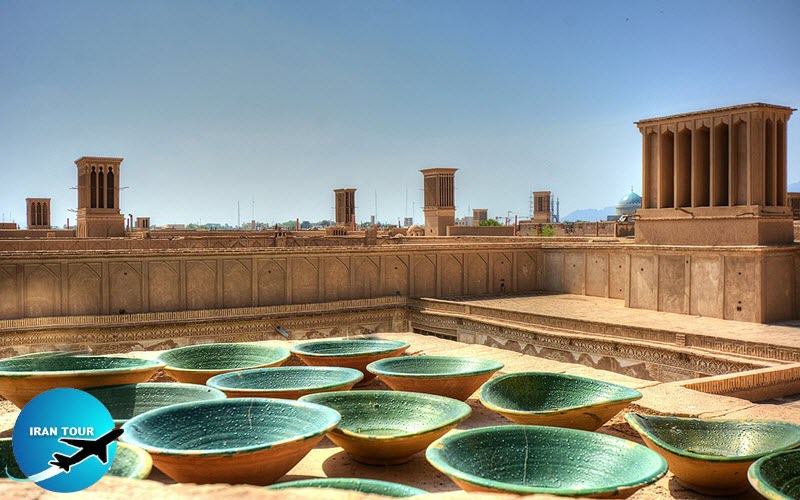 |
- Rooftop Cafes of Yazd
One of the best ways to experience Yazd is on one of its many, many iconic roof-top cafes and restaurants. Cool in summer with the smell of straw-clay plaster, and a nice view of Yazd sunset, there is no better way to waste a few hours than taking in the surreal view with a cup of coffee or traditional Yazd food. Each of the hotels or roofing restaurants in Yazd will offer you a special view. But if you are looking for the best view possible, you can try Fazeli Hotel Coffee Shop for sunset, Cafe Fooka with its incredible milkshakes, or Art House Cafe with its panoramic view of the entire old town.
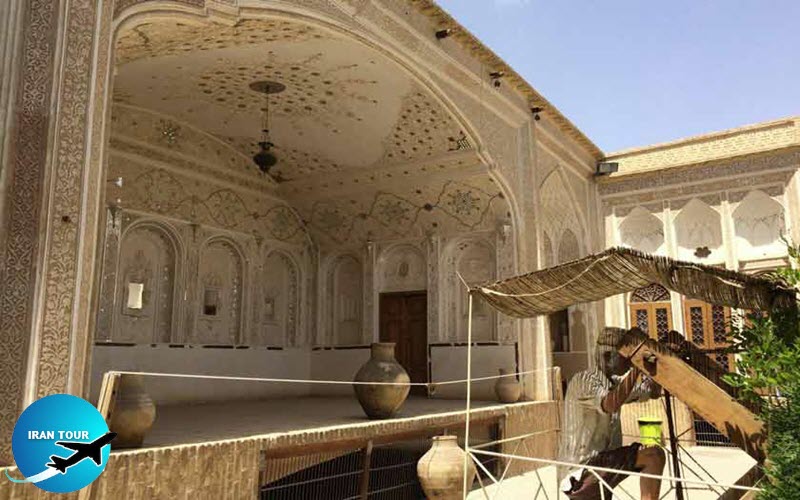 |
- Yazd Water Museum
Yazd is the city of Qanats and windcatchers where its people transfer the water from the depths of the dry and hot land to the surface. The Water Museum is the best exhibition to recognize the efforts of people to preserve - store and use it properly. The best museum in Iran to learn about the intriguing history of the qanats (underground aqueducts) of Iran, which has been recorded by UNESCO World Heritage Listing. Yazd is a city of Qanats and underground canals, they have the oldest and best-maintained qanats that were necessary to these desert cities. They extract fresh and cold water that was brought underground from nearby mountains and transfer it to the houses. Spend your time exploring the history and the process that went into building these feats of engineering, all in a stunning restored mansion where you can freely explore both above and below ground. A must-see in Yazd for anyone, even with a passing curiosity to know how this incredible city, one of the oldest in the world, was able to survive in such extreme conditions.
Free Yazd Walking Tour |
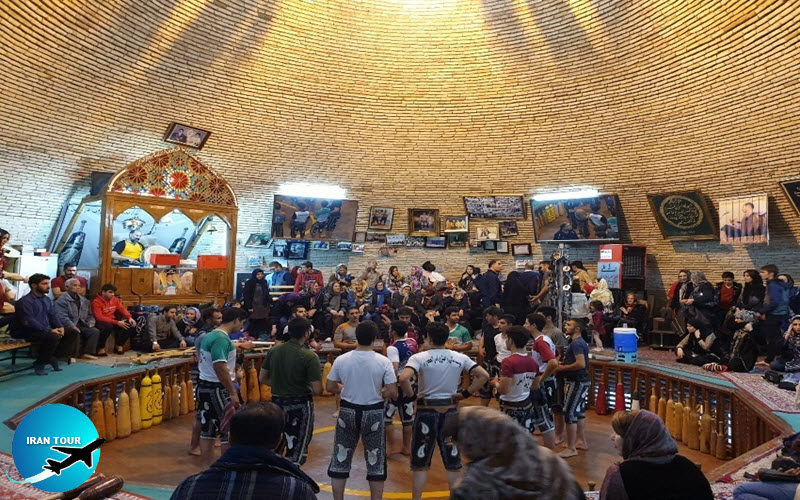 |
-Saheb Azalan Club Zurkhaneh
The Persian gymnastic or a spiritual ritual that has been recorded by UNESCO as an Intangible Cultural Heritage of Iran in 2010.
Completely unique in Iran, an old water reservoir that was renovated and changed to a Zurkhaneh where practitioners of an ancient sport perform rhythmic movements with songs and sports equipment. There are different names for this ceremony, such as "varzesh e pahlavani" "heroic sport" or "varzesh e bastani" "ancient sport". The first of July is known as a day of respect for the Pahlavani and Zoorkhaneh rituals in Iran. Women are welcome to watch, but not to participate.
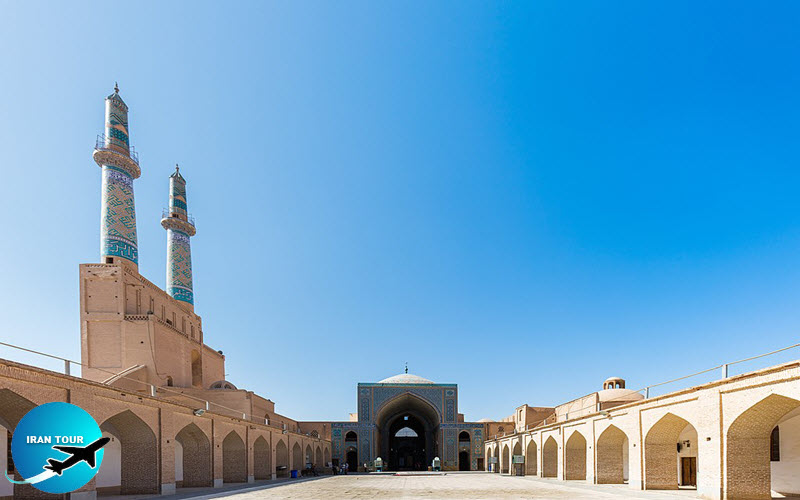 |
- Jame Mosque of Yazd
The most valuable and dazzling brick monument of the city, whose minarets are visible from all parts of the city. This 14th–century mosque in the middle of Yazd city is a must-see place for recognizing the art of Yazd architecture. This stunning building with twin minarets is worthy to visit not only for the tall minarets but also for its incredible tile-work. This mosque is a unique collection of Iranian-Islamic arts such as tiling, Quran verses on tiles, interesting calligraphic patterns, plasterwork, Muqarnas, and other decorations. This is also one of the best places to see the Qanats of Iran UNESCO Site, with a small stairway down off the main courtyard.
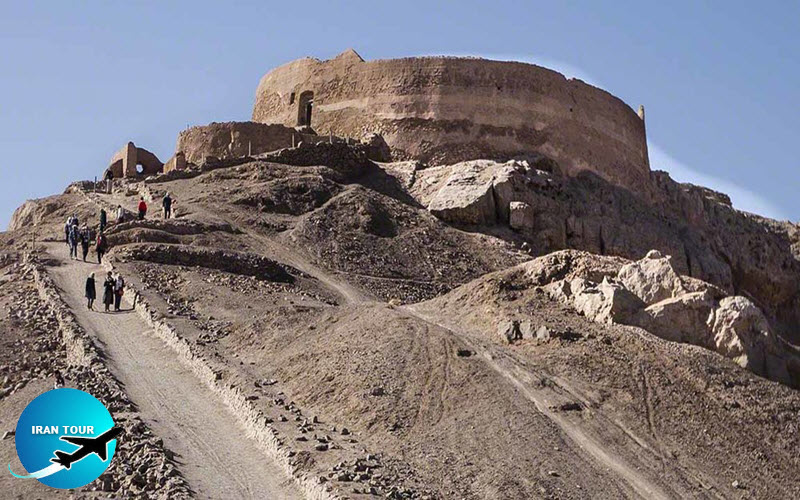 |
-Towers of Silence
A place to respect the soil as one of the four elements (water-wind-soil-fire) in Iranian Zoroastrian religious thought. Towers that are abandoned over 80 years old. Abandoned towers are necessary to understand part of the Zoroastrian thoughts. This complex included the towers and small houses(used for relatives of the deceased to stay and mourn) are unique in Iran and there is nothing else quite like it. Just a 15-minute taxi trip from the Old Town of Yazd will amaze you.
 |
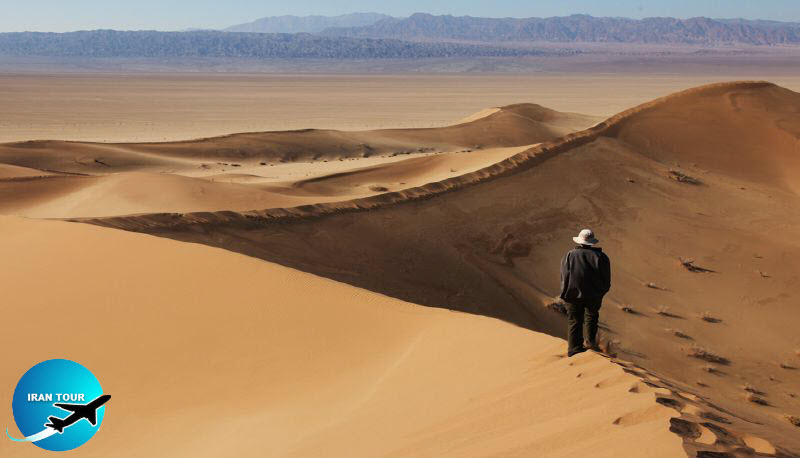 |
- Desert of Yazd
As Chinese people say: No trip to Beijing is complete without a Peking duck we say no trip to Yazd is complete without Desert Tour.
The undulating Yazd sand dunes are only 30 minutes drive away. Then a daily desert tour or sunset tour in the desert would be the best option for you.
Travel agencies have prepared many exciting choices for you. An exciting 4WD journey - camel riding - camping in the heart of the desert - night bonfire and watching the sunset. They allow you to feel the beauties of the desert more. While not as unique as the Kaluts of Kerman, the Yazd Desert is still an incredible sight to behold and will likely be a highlight of your trip to Yazd.
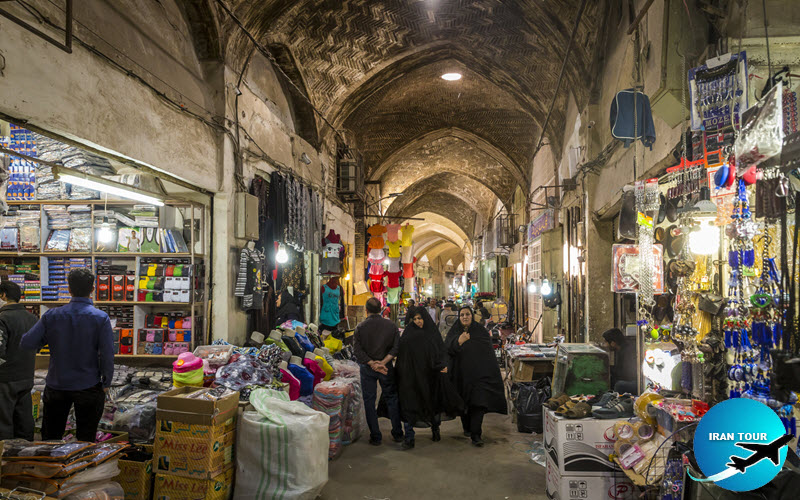 |
- Yazd Khan Bazaar
What more could satisfy you than, the smile of traders, colored muddy domes, spicy shops, delicate colored carpets, and history… Nothing, that’s what.
Bazaars are anthropological museums of cities and you always need to check out the local bazaar and this one is no exception. This 9th-century Bazaar with twisted Labyrinth is a must-see, take your time to explore these twisting alleys after dark when most people come out after a scorching day to enjoy the refreshing breeze, chat, and pick up a few essentials!
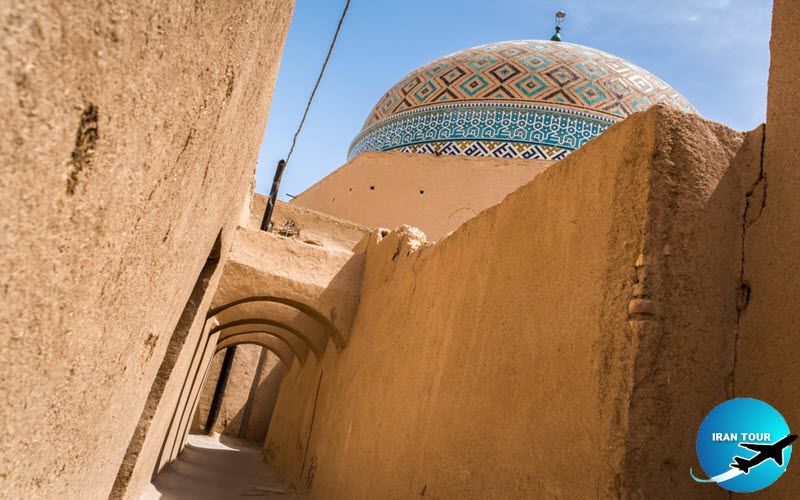 |
- Old City
You may be wondering at first, but after taking a few turns you will find your way. One of the oldest human settlements on Earth, the Old Town of Yazd with tall muddy walls, the twisted labyrinth of alleys, old alleys, and houses will create a complicated puzzle for tourists that their reward would be a number of amazing and nice beauties. Find your way and explore as many streets as you can, and discover all the hidden courtyards, beautiful wooden doors, photogenic spots, and rays of light that make Yazd such a special site as a UNESCO World Heritage Site. UNESCO added “the historic old city of Yazd” to the World Heritage Site List in 2017.
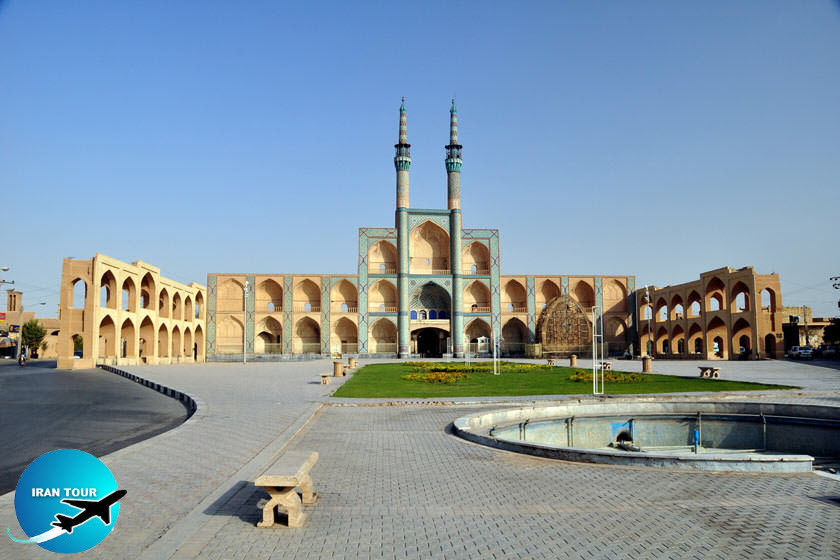 |
- Amir Chaqmaq Complex
The most famous icon of Yazd and one of the largest structures of its type in Iran, the Amir Chakhmaq Mosque is the photographers' dream. The rows of perfectly proportioned sunken alcoves are at their best and most photogenic in the late afternoon, when the copper-colored sunlight is captured within each alcove and the towering exterior appears to glow against the darkening sky. The locals prefer to sit around the square in the evening chatting and enjoying the view of the imposing three-story facade. If you are wondering where to buy some local pastry, this is the right place for you since there are a number of shops all around the main area.
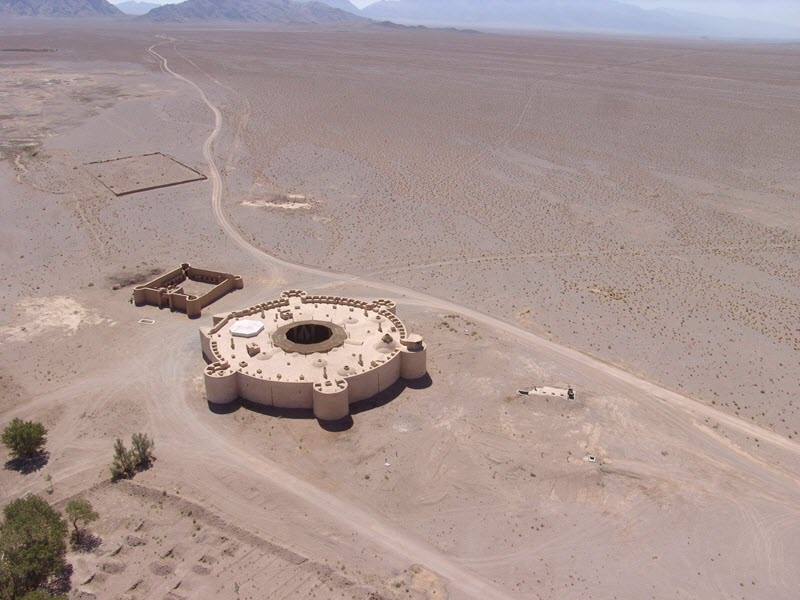 |
-Zein O Din Caravanserai
A journey to the heart of the desert, One night at antique Caravanserai.
Desert, heat, stars in the night sky, and tired travelers, are all the reasons for creating a masterpiece of architecture by the architects of the Safavid era. During the reign of Shah Abbas, the construction of public buildings expanded, Such buildings include bridges, bathroom, schools, water storage, and especially caravanserai. The old Caravansaries have the role of today's hotels in the last 500 years. These places are built at distinct distances from cities. Most travelers to Iran, are looking forward to dreamy accommodation in unique, and historical places. If you are one of those, this is it. This Safavid Caravanserai with all historical, architectural, and artistic elements would be the right place for you to stay and have a memorable night. This small circle-shaped Caravanserai was built about 200 years ago on the orders of Shah Abbas I and now is changed to a dreamy desert hotel.
- Details
- Category: Top 10 Things to Do in Yazd